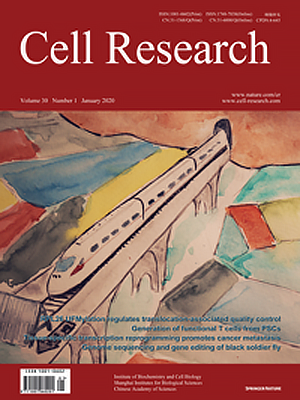
Advanced Search
Submit Manuscript
Advanced Search
Submit Manuscript
Volume 30, No 1, Jan 2020
ISSN: 1001-0602
EISSN: 1748-7838 2018
impact factor 17.848*
(Clarivate Analytics, 2019)
Volume 30 Issue 1, January 2020: 95-97 |
Sitong Chen1, Jinglin Wang2, Haozhen Ren2, Yinan Liu1,Chengang Xiang1, Cheng Li3, Shichun Lu4, Yan Shi1,Hongkui Deng1 and Xiaolei Shi2
1 Department of Cell Biology, School of Basic Medical Sciences, State Key Laboratory of Natural and Biomimetic Drugs, Peking University Health Science Center and the MOE Key Laboratory of Cell Proliferation and Differentiation, College of Life Sciences, PekingTsinghua Center for Life Sciences, Peking University, Beijing 100191, China; 2 Department of Hepatobiliary Surgery, the Affiliated Drum Tower Hospital of Nanjing University Medical School, Hepatobiliary Institute of Nanjing University, Nanjing, Jiangsu, China; 3Center for Bioinformatics, Peking University, Beijing 100871, China and 4Department of Hepatobiliary Surgery, Chinese PLA General Hospital, Beijing 100853, China
https://doi.org/10.1038/s41422-019-0261-5